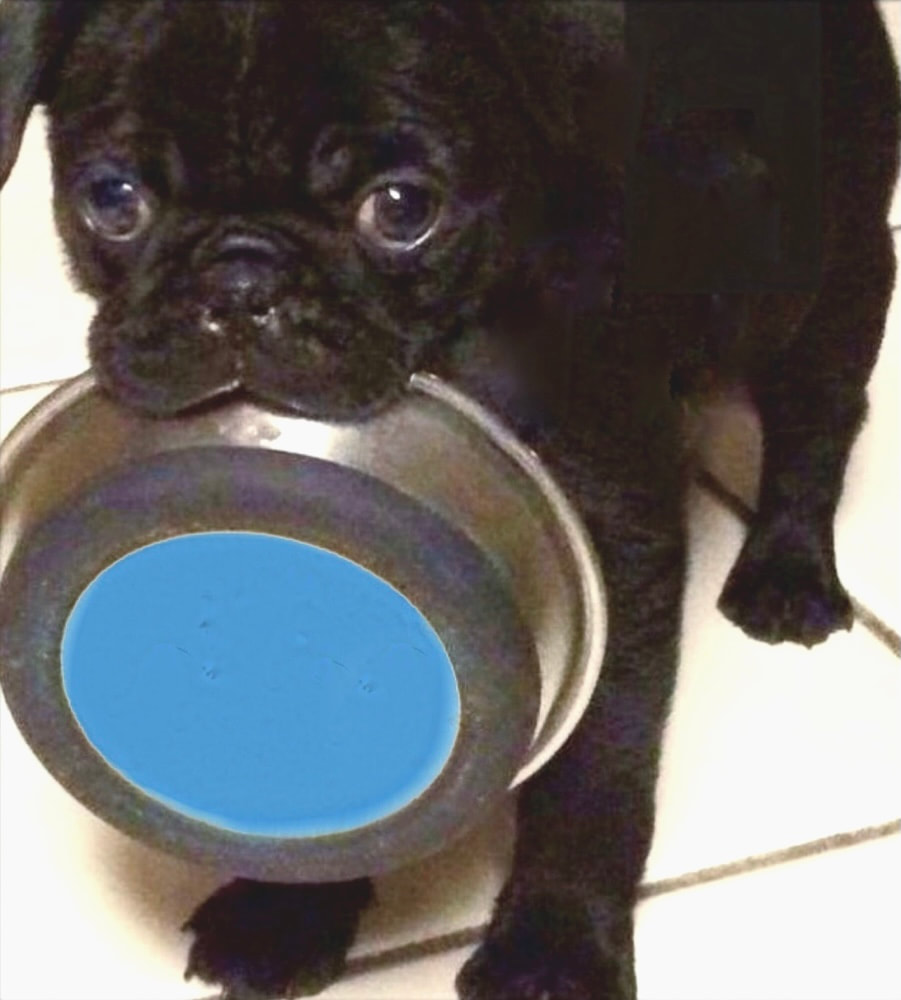|
By Katy Cable-The Weekly Runt A 4 min. Read Wanna know the difference between mild and severe allergies in dogs? For starters, it's several hundred bucks in vet bills 😜. While the weather, changing seasons and other environmental factors may be partially to blame for your pup’s issues, the main trigger and cause is usually always THEIR FOOD. Identifying the specific food allergen however, can be a daunting, expensive headache. First let's look at what a food allergy is: When a dog is allergic to a food ingredient in their diet, their immune system jumps into overdrive thinking that substance is attaching their body. The body goes to war in the same way it would if exposed to a real danger such as a deadly bacteria. Everyday I see frustrated pet parents trying to help their dogs who are suffering from food allergies. The first thing they frequently tell me is their vet says they're allergic to chicken. When I ask what brand of pet food has been giving them problems, often it’s a dry processed kibble loaded with corn, wheat, grains and gluten. The protein is typically a poor quality rendered poultry, and/or beef that is often pumped with growth hormones, antibiotics and other harmful chemicals. Many times it’s a combination of several different proteins (ie: fish, chicken, beef, duck.) When I switch them to a grain-free, low-glycemic carb, pet food that contains a single, novel protein that’s clean (free-range, grass-fed without antibiotics or hormones), the problems quickly clear up, even if it contains the suspected protein source. Not all pet-foods are created equally! Unfortunately, a high percentage of pet foods use massive amounts of starchy carbs “fillers” and the meat is the leftover, rendered pieces and parts of factory farmed meats. The same try,6. parts not deemed suitable for human consumption. Also there is ample deception in ingredient labeling in pet foods so it can be impossible to find the exact culprit. If your dog has a food allergy, they will typically have symptoms like itchy skin, rashes, and yeasty ear infections. And then there’s horrible gas and runny, smelly stools. There may be vomiting and diarrhea. However, it can often take some time for the immune system and GI tract to be significantly compromised enough for your dog to show digestive disturbances. While most of us use the term "food allergy" to describe the problem, true food allergies, also called “Adverse Food Reactions” are actually quite rare. According to Dr. Jean Dodds, a world-renowned veterinarian and creator of the NutriScan food intolerance test, in all likelihood, it is not an allergy but a food intolerance. A simple description is in the body's immune responses. A true food allergy produces a much harsher, more immediate reaction and a specific type of antibodies. A food intolerance or sensitivity produces a more delayed response of a different type of antibodies. Most conventional veterinarians who suspect a pet is dealing with a food intolerance typically recommend a highly processed “prescription” diet. Holistic vet's often take a different approach which I recommend. If you have a dog or cat over the age of one year who is dealing with a possible food sensitivity, ask your vet about the NutriScan food intolerance test which identifies 24 of the most common foods dogs eat, including: Beef Chicken Millet Soy Pork Rabbit Venison (deer) Barley Rice Sweet potato Salmon Quinoa Chicken eggs Wheat Potato Oatmeal Lamb Lentils (includes peas) Corn Turkey Peanuts/peanut butter Cow's milk Duck White-colored ocean fish (includes menhaden, pollack, herring and sardines) NutriScan is a simple salivary test, and is currently the most accurate food sensitivity test on the market. A simple swab not only takes away all the guesswork but also makes tedious and time consuming elimination diets unnecessary. It's important to note that NutriScan doesn't test for food allergies, but rather food sensitivities and intolerances occurring over the last six months to two years. When dogs eat the same food day after day, year after year they can develop a sensitivity to the protein source. Especially if the food is inexpensive, highly processed, and includes meat pumped full of antibiotics and hormones. This alone can cause the immune system to go into overdrive. Dogs can also grow sensitive to a host of other allergenic ingredients in the food such as the typical culprits: corn, grains, gluten, soy and other carbohydrates. The NutriScan test can quickly identify the specific ingredient(s) in your dog's food which are causing problems. This makes it much easier to revamp your dog's diet and successfully resolve problems. If your dog is experiencing adverse reactions to some aspect of their diet, it is imperative to give their body a break from the food they've been eating. This will give the immune system an opportunity to calm down and hopefully you will see improvement in symptoms. And don’t forget to stop all the treats too! Many times, it’s too many poor quality treats that is causing problems. After determining your pet has a food intolerance, the next step is to slowly introduce a new diet containing ingredients their body isn't familiar with. For example, if your pooch has been eating chicken and rice-kibble since you brought them home, I would suggest trying a salmon and sweet potato or lamb and lentils based food. Most vets suggest switching both the main source of protein as well as the primary carb to achieve the most effective results. I have seen dramatic results by just having pet parents eliminate TREATS, plus grains, corn, gluten and filler ingredients that are common triggers. They continue to thrive when they stay on low-glycemic carb diets that contain clean animal proteins. I have had tremendous success with Nulo pet food which uses free-range, grass fed meats with no hormones or antibiotics, low glycemic carbs and adds powerhouse probiotics. It takes all the guesswork out of it and makes it simple. There are many great foods options available, or you can make your pet’s food yourself. If you need assistance, visit my website where I have lots of blogs to help you select a nutritional, safe pet food. If you are transitioning your pet to a diet, I recommend working with a holistic or integrated veterinarian. To find a list of them in your area visit: http://www.ahvma.org/find-a-holistic-veterinarian/ However, whatever you decide, the following tips from Dr. Karen Becker should be extremely helpful: 🐾🐾🐾🐾🐾 A dog with food sensitivities should remain on a novel diet for a minimum of two months and preferably three, to allow the body time to clear out the allergenic substances and begin the detoxification process. During this period it's important to use good pre and probiotics to build up their inflammatory response in the GI tract. Because each case of food intolerance and dysbiosis is unique, I recommend working with a holistic or integrative veterinarian. Once a patient has completed two to three months on a novel diet, other foods are slowly reintroduced one at a time, and the dog's response is closely monitored. Some dogs show dramatic improvement on the new diet, and in those cases, I often don't rush the reintroduction of food that could be problematic. When the dog is stable and doing well, I encourage dog parents to find at least one and preferably two other protein sources their pet tolerates well so that every three to six months, they can rotate proteins and hopefully avoid further allergic reactions. In addition, the cleaner the proteins, the less chance your dog will become sensitive to them over time. Clean animal proteins are non-toxic. For example, animals raised on a natural diet (grass-fed, not factory farmed) as well as hormone-free animals, are better food sources for sensitive pets. During and after a novel diet, I recommend natural supplements to aid detoxification, relieve allergic symptoms and support your pet's immune system. Your holistic veterinarian can help you select the supplements most appropriate for your pet's individual needs. 🐾🐾🐾🐾🐾 Click here for my Farmecuticals blog featuring great, inexpensive things to enhance your pets health that can be found right in your own cupboards at home. Click the link below to watch a short video on the best foods for sensitive pets. 👍🏼💕 |
PARTNERSHIPS
...Let’s Work Together
I love collaborating with other influencers and brands! Whether you need assistance with social media, creating an unforgettable event or want to be featured in my nationally syndicated blog, I can help. Let’s talk!


